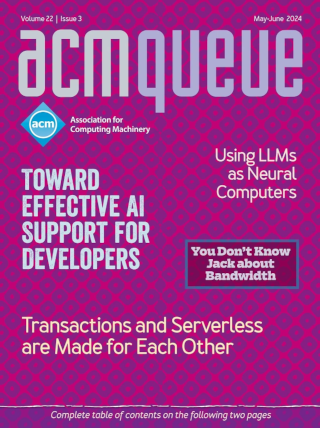The Joy of Spam:
Embracing e-mail’s dark side
Not a day goes by that a large amount of spam doesn’t get past the two filters that I have in place. Most of this e-mail is annoying and some of it dangerous. But I have finally come to peace with spam and it no longer bothers me. How did I do that, you ask? I have learned to respect, even love, spam’s malicious beauty. I want to share my journey to inner peace, hopeful that you will find happiness, too.
E-mail Authentication: What, Why, How?:
Perhaps we should have figured out what was going to happen when Usenet started to go bad.
Internet e-mail was conceived in a different world than we live in today. It was a small, tightly knit community, and we didn’t really have to worry too much about miscreants. Generally, if someone did something wrong, the problem could be dealt with through social means; “shunning” is very effective in small communities. Perhaps we should have figured out what was going to happen when Usenet started to go bad. Usenet was based on an inexpensive network called UUCP, which was fairly easy to join, so it gave us a taste of what happens when the community becomes larger and more distributed—and harder to manage.
Fighting Spam with Reputation Systems:
User-submitted spam fingerprints
Spam is everywhere, clogging the inboxes of e-mail users worldwide. Not only is it an annoyance, it erodes the productivity gains afforded by the advent of information technology. Workers plowing through hours of legitimate e-mail every day also must contend with removing a significant amount of illegitimate e-mail. Automated spam filters have dramatically reduced the amount of spam seen by the end users who employ them, but the amount of training required rivals the amount of time needed simply to delete the spam without the assistance of a filter.
Instant Messaging or Instant Headache?:
IM has found a home within the enterprise, but it’s far from secure.
It’s a reality. You have IM (instant messaging) clients in your environment. You have already recognized that it is eating up more and more of your network bandwidth and with Microsoft building IM capability into its XP operating system and applications, you know this will only get worse. Management is also voicing concerns over the lost user productivity caused by personal conversations over this medium. You have tried blocking these conduits for conversation, but it is a constant battle.
The Economics of Spam:
Who pays in the spam game?
You know what I hate about spam filtering? Most of what we do today hurts the people who are already being hurt the most. Think about it: Who pays in the spam game? The recipients. That’s what’s wrong in the first place - the wrong folks pay for this scourge.
IM, Not IP (Information Pollution):
A steady dose of realtime interruptions is toxic to anyone’s health.
Respected technology commentators say that they now prefer instant messaging (IM) over e-mail as their medium of choice for computer-mediated communication. The main reasons are that e-mail has become an overloaded channel for readers and that you can’t be sure to get a timely response from the recipients of your e-mail.
A Conversation with Peter Ford:
The IM world according to a messenger architect
Instant messaging (IM) may represent our brave new world of communications, just as e-mail did a few short years ago. Many IM players are vying to establish the dominant standard in this new world, as well as introducing new applications to take advantage of all IM has to offer. Among them, hardly surprising, is Microsoft, which is moving toward the Session Initiation Protocol (SIP) as its protocol choice for IM.
On Helicopters and Submarines:
SIP does a great job as a helicopter, but when you try to make it function as an IM submarine as well, disaster may follow.
Bernoulli vs. Archimedes - Whenever you see a movie that’s got a vehicle that’s part helicopter and part submarine, you know you’re in for a real treat. What could be cooler? One second, the hero’s being pursued by some fighter jets piloted by some nasty dudes with bad haircuts, dodging air-to-air missiles and exchanging witty repartee over the radio with a megalomaniac bent on world domination; and then, just as the hero is unable to evade the very last missile, he pushes a button, the craft dives into the ocean, and is surrounded by an oasis of peaceful blue.
Nine IM Accounts and Counting:
The key word with instant messaging today is interoperability.
Instant messaging has become nearly as ubiquitous as e-mail, in some cases far surpassing e-mail in popularity. But it has gone far beyond teenagers’ insular world to business, where it is becoming a useful communication tool. The problem, unlike e-mail, is that no common standard exists for IM, so users feel compelled to maintain multiple accounts, for example, AOL, Jabber, Yahoo, and MSN.
Broadcast Messaging: Messaging to the Masses:
This powerful form of communication has social implications as well as technical challenges.
We have instantaneous access to petabytes of stored data through Web searches. With respect to messaging, we have an unprecedented number of communication tools that provide both synchronous and asynchronous access to people. E-mail, message boards, newsgroups, IRC (Internet relay chat), and IM (instant messaging) are just a few examples. These tools are all particularly significant because they have become essential productivity entitlements. They have caused a fundamental shift in the way we communicate. Many readers can attest to feeling disconnected when a mail server goes down or when access to IM is unavailable.
Beyond Instant Messaging:
Platforms and standards for these services must anticipate and accommodate future developments.
The recent rise in popularity of IM (instant messaging) has driven the development of platforms and the emergence of standards to support IM. Especially as the use of IM has migrated from online socializing at home to business settings, there is a need to provide robust platforms with the interfaces that business customers use to integrate with other work applications. Yet, in the rush to develop a mature IM infrastructure, it is also important to recognize that IM features and uses are still evolving. For example, popular press stories1 have raised the concern that IM interactions may be too distracting in the workplace.
Spam, Spam, Spam, Spam, Spam, the FTC, and Spam:
A forum sponsored by the FTC highlights just how bad spam is, and how it’s only going to get worse without some intervention.
The Federal Trade Commission held a forum on spam in Washington, D.C., April 30 to May 2. Rather to my surprise, it was a really good, content-full event. The FTC folks had done their homework and had assembled panelists that ran the gamut from ardent anti-spammers all the way to hard-core spammers and everyone in between: lawyers, legitimate marketers, and representatives from vendor groups.






